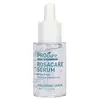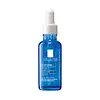What's inside
What's inside
 Key Ingredients
Key Ingredients

 Benefits
Benefits

 Ingredients Side-by-side
Ingredients Side-by-side

Water
Skin ConditioningButylene Glycol
HumectantDipropylene Glycol
HumectantGlycerin
HumectantBenzyl Glycol
SolventArginine
MaskingCarbomer
Emulsion StabilisingGlycyrrhiza Glabra Root Extract
BleachingNiacinamide
SmoothingCucumis Sativus Fruit Extract
EmollientNarcissus Tazetta Extract
AstringentTuber Magnatum Extract
Skin Conditioning1,2-Hexanediol
Skin ConditioningHydrolyzed Sclerotium Gum
HumectantXylitylglucoside
HumectantEthylhexylglycerin
Skin ConditioningAnhydroxylitol
HumectantSodium Hyaluronate
HumectantXylitol
HumectantGlucose
HumectantWater, Butylene Glycol, Dipropylene Glycol, Glycerin, Benzyl Glycol, Arginine, Carbomer, Glycyrrhiza Glabra Root Extract, Niacinamide, Cucumis Sativus Fruit Extract, Narcissus Tazetta Extract, Tuber Magnatum Extract, 1,2-Hexanediol, Hydrolyzed Sclerotium Gum, Xylitylglucoside, Ethylhexylglycerin, Anhydroxylitol, Sodium Hyaluronate, Xylitol, Glucose
Water
Skin ConditioningDipropylene Glycol
HumectantGlycerin
HumectantBetaine
HumectantPropanediol
SolventPentylene Glycol
Skin ConditioningPEG-8
HumectantPolysorbate 20
EmulsifyingPEG/PPG/Polybutylene Glycol-8/5/3 Glycerin
HumectantSodium Hyaluronate
HumectantAmmonium Polyacryloyldimethyl Taurate
Emulsion StabilisingHydroxyacetophenone
AntioxidantCaprylyl Glycol
EmollientCitric Acid
BufferingAcetyl Dipeptide-1 Cetyl Ester
Skin Conditioning
 Reviews
Reviews

Ingredients Explained
These ingredients are found in both products.
Ingredients higher up in an ingredient list are typically present in a larger amount.
Dipropylene Glycol is a synthetically created humectant, stabilizer, and solvent.
This ingredient helps:
Dipropylene glycol is technically an alcohol, but it belongs to the glycol family (often considered part of the ‘good’ alcohols). This means it is hydrating and gentle on skin unlike drying solvent alcohols like denatured alcohol.
As a masking agent, Dipropylene Glycol can be used to cover the smell of other ingredients. However, it does not have a scent.
Studies show Dipropylene Glycol is considered safe to use in skincare.
Learn more about Dipropylene GlycolGlycerin is already naturally found in your skin. It helps moisturize and protect your skin.
A study from 2016 found glycerin to be more effective as a humectant than AHAs and hyaluronic acid.
As a humectant, it helps the skin stay hydrated by pulling moisture to your skin. The low molecular weight of glycerin allows it to pull moisture into the deeper layers of your skin.
Hydrated skin improves your skin barrier; Your skin barrier helps protect against irritants and bacteria.
Glycerin has also been found to have antimicrobial and antiviral properties. Due to these properties, glycerin is often used in wound and burn treatments.
In cosmetics, glycerin is usually derived from plants such as soybean or palm. However, it can also be sourced from animals, such as tallow or animal fat.
This ingredient is organic, colorless, odorless, and non-toxic.
Glycerin is the name for this ingredient in American English. British English uses Glycerol/Glycerine.
Learn more about GlycerinSodium Hyaluronate is hyaluronic acid's salt form. It is commonly derived from the sodium salt of hyaluronic acid.
Like hyaluronic acid, it is great at holding water and acts as a humectant. This makes it a great skin hydrating ingredient.
Sodium Hyaluronate is naturally occurring in our bodies and is mostly found in eye fluid and joints.
These are some other common types of Hyaluronic Acid:
Learn more about Sodium HyaluronateWater. It's the most common cosmetic ingredient of all. You'll usually see it at the top of ingredient lists, meaning that it makes up the largest part of the product.
So why is it so popular? Water most often acts as a solvent - this means that it helps dissolve other ingredients into the formulation.
You'll also recognize water as that liquid we all need to stay alive. If you see this, drink a glass of water. Stay hydrated!
Learn more about Water